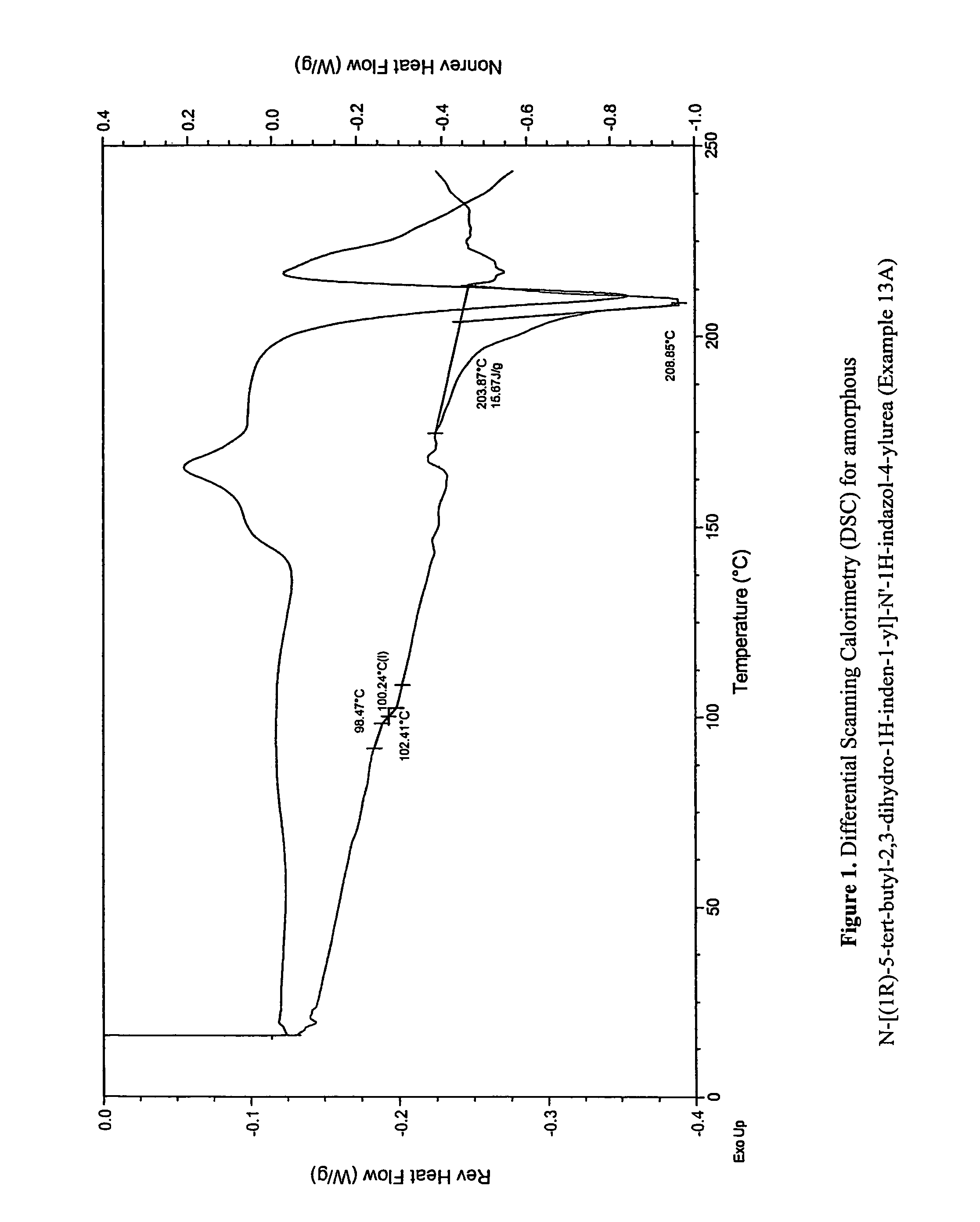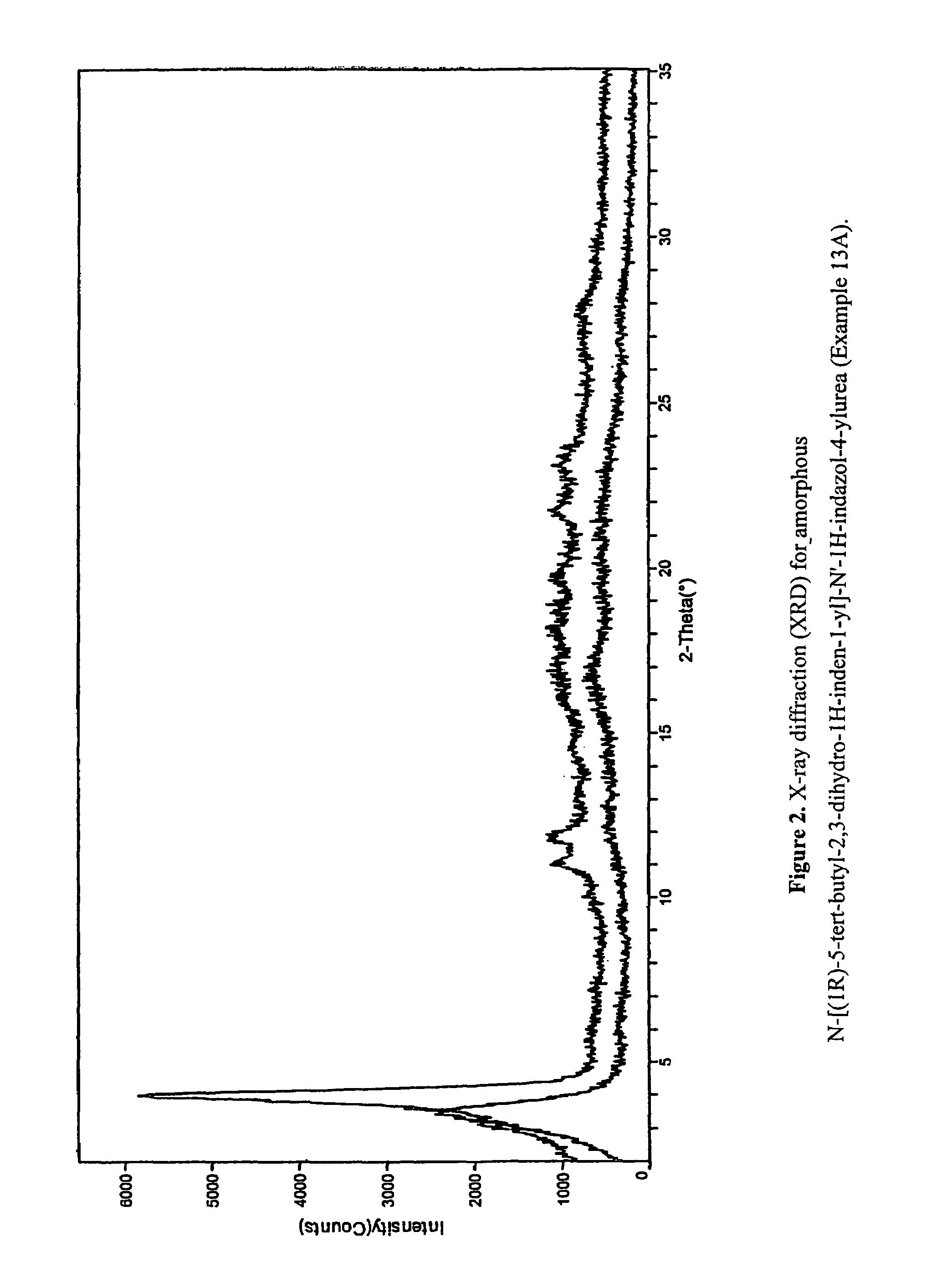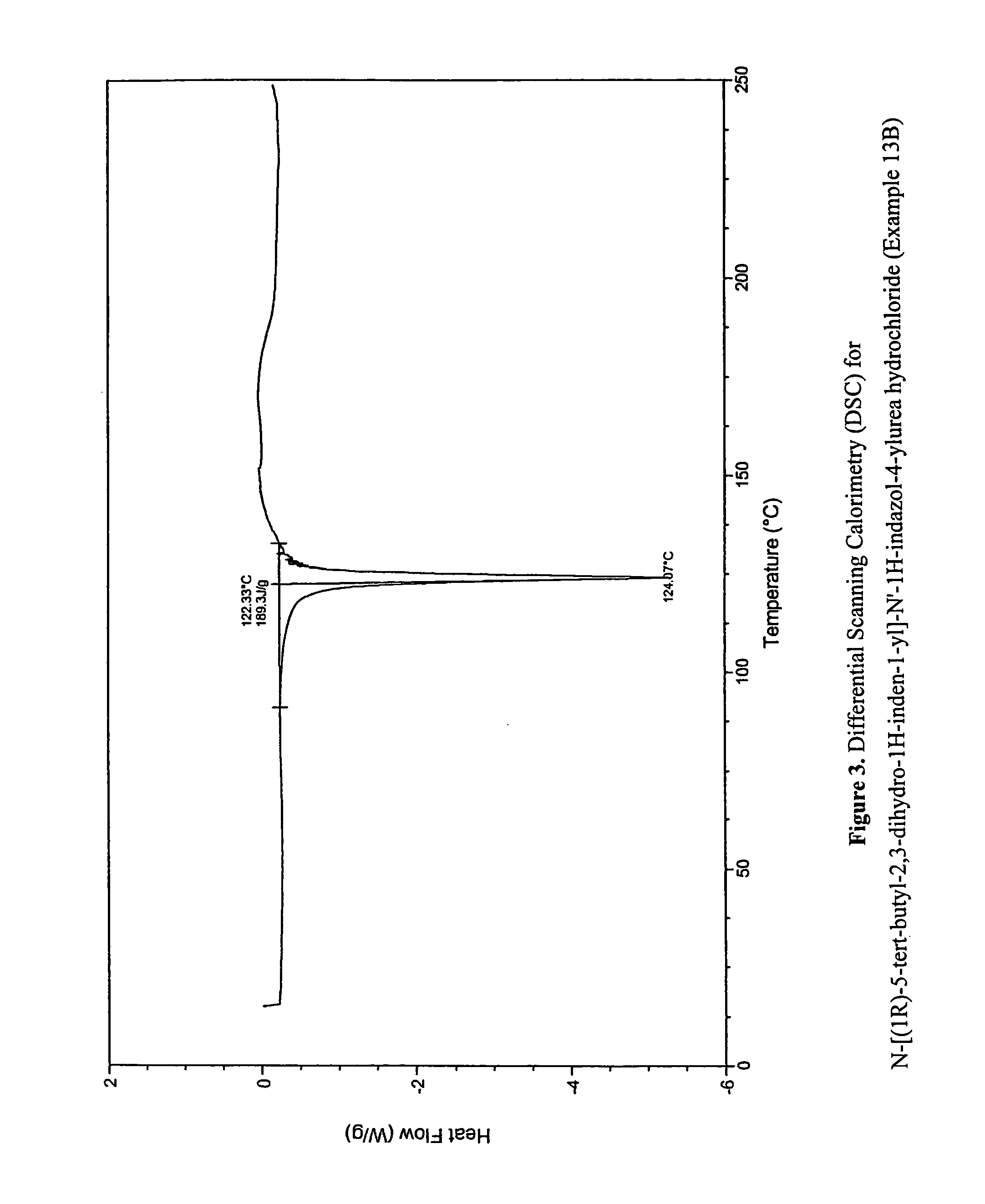Fused compounds that inhibit vanilloid receptor subtype 1 (VR1) receptor
a vanilloid receptor and compound technology, applied in the field of compounds, can solve problems such as cell membrane depolarization
- Summary
- Abstract
- Description
- Claims
- Application Information
AI Technical Summary
Problems solved by technology
Method used
Image
Examples
example 1
N-(5-tert-butyl-2,3-dihydro-1H-inden-1-yl)-N′-5-isoquinolinylurea
example 1a
1-(4-tert-butylphenyl)-3-chloro-1-propanone
[0289]A solution of tert-butyl benzene (31 ml, 200 mmol) and 3-chloro-propionyl chloride (19 ml, 200 mmol) in methylene chloride (75 ml) was added dropwise to a suspension of aluminum chloride (29.33 g, 220 mmol) in methylene chloride (300 ml) at 0° C. The reaction mixture was allowed to warm to ambient temperature, stirred for 16 hours, and quenched with water dropwise. The reaction mixture was washed with water, dried with magnesium sulfate, and the filtrate was evaporated under reduced pressure to provide the title compound which was used without further purification in the next step.
[0290]Alternatively, to a flask fitted with a mechanical stirrer, a nitrogen inlet, a thermocouple, and an addition funnel was charged aluminum trichloride (67.2 g, 0.505 mol) and dichloromethane (600 mL). The suspension was cooled to ˜1° C. and 3-chloropropionyl chloride (64.1 g, 0.505 mol.) was added over 5 minutes. To the resulting clear solution, t-butyl...
example 1b
5-tert-butyl-1-indanone
[0291]1-(4-tert-Butylphenyl)-3-chloro-1-propanone (22.25 g, 99 mmol) was dissolved in concentrated sulfuric acid (100 ml) and heated on a water bath at 95° C. for 2.5 hours. The reaction mixture was cooled, poured onto ice, and extracted with diethyl ether. The combined organic extracts were washed with saturated aqueous sodium bicarbonate, dried with magnesium sulfate, and the filtrate was evaporated under reduced pressure to provide the title compound which was used without further purification in the next step.
[0292]Alternatively, chloroketone intermediate was added over 2 hours to concentrated sulfuric acid (600 mL) heated to 90° C. After additional 1 hour at 90° C., the reaction was complete by HPLC and the mixture was cooled to 15° C. The mixture was slowly transferred into a mixture of water (1.2 L), MTBE (0.3 L) and heptanes (0.3 L) precooled to 0° C., while maintaining the internal temperature 3, 400 MHz): 7.68 ppm (br.d, 1H), 7.47 (br.s., 1H), 7.42 (...
PUM
| Property | Measurement | Unit |
|---|---|---|
| temperature | aaaaa | aaaaa |
| temperature | aaaaa | aaaaa |
| temperature | aaaaa | aaaaa |
Abstract
Description
Claims
Application Information
 Login to View More
Login to View More - R&D
- Intellectual Property
- Life Sciences
- Materials
- Tech Scout
- Unparalleled Data Quality
- Higher Quality Content
- 60% Fewer Hallucinations
Browse by: Latest US Patents, China's latest patents, Technical Efficacy Thesaurus, Application Domain, Technology Topic, Popular Technical Reports.
© 2025 PatSnap. All rights reserved.Legal|Privacy policy|Modern Slavery Act Transparency Statement|Sitemap|About US| Contact US: help@patsnap.com



